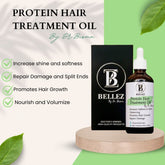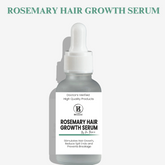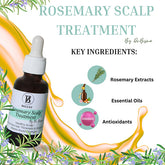







Peppermint Essential Oil is known for its refreshing, invigorating scent and its numerous benefits for the skin and hair. Extracted from the leaves and stems of the peppermint plant (Mentha × piperita), this oil is prized for its cooling, soothing, and stimulating properties. When used in beauty routines, peppermint oil can help improve circulation, promote a healthy complexion, and boost hair health
Benefits of using Peppermint Essential Oil:
-
Promotes Healthy Hair Growth:
Peppermint oil stimulates blood circulation to the scalp, which can encourage hair growth. It also helps balance oil production, reducing scalp issues like dandruff. -
Soothes Dry, Itchy Scalp:
The cooling effect of peppermint oil calms scalp irritation and itchiness, providing relief from dryness or conditions like dandruff. -
Improves Skin Tone and Texture:
Peppermint oil improves blood circulation, which can lead to a healthy, glowing complexion. It also has anti-inflammatory properties that help soothe redness and irritation. -
Treats Acne:
With its antibacterial and antiseptic qualities, peppermint oil helps cleanse pores, reduce acne-causing bacteria, and calm inflammation, making it effective for treating acne. -
Refreshes Tired or Puffy Eyes:
The cooling sensation of peppermint oil helps reduce puffiness around the eyes and enhances circulation, leaving the skin around the eyes looking more awake and refreshed. -
Acts as a Natural Lip Plumper:
Peppermint oil promotes blood flow to the lips, giving them a fuller and plumper appearance naturally. -
Energizes and Refreshes the Skin:
The invigorating scent of peppermint oil revitalizes dull or tired skin, providing an energizing effect and a refreshed appearance
How to Use Peppermint Essential Oil:
- Hair Care: Add 2–3 drops of peppermint essential oil to your shampoo or conditioner, or mix with carrier oil and massage into the scalp to boost circulation and promote hair growth.
- Skin Care: Mix a drop or two of peppermint oil with a carrier oil (like almond, jojoba, or coconut oil) and apply it to your face to calm irritated skin, fight acne, or refresh the complexion.
- Facial Masks: Add a drop of peppermint oil to a clay or honey mask to help purify the skin and fight acne-causing bacteria.
- Lip Care: Combine peppermint oil with a moisturizing lip balm or carrier oil and apply to your lips for a natural plumping effect.
- Body Scrubs: Blend peppermint oil with sugar, salt, or coffee grounds to create a refreshing and exfoliating body scrub.
Dilution Guidelines of using Peppermint Essential Oil:
General dilution guidelines for essential oils suggest using 1-2 drops of essential oil per 1 teaspoon (5 ml) of carrier oil for everyday use, which equals a 1-2% dilution for adults. For sensitive skin or children, a 0.5-1% dilution is recommended, with 1 drop per 1 tablespoon (15 ml) of carrier oil. Always do a patch test first and avoid using undiluted oils on the skin.
Precautions:
· Patch Test: Always perform a patch test on a small area of skin (like your inner wrist) to check for any sensitivity or allergic reactions before using Vitamin E Essential Oil more widely.
· Use with Caution for Pregnant or Nursing Women: If you are pregnant or breastfeeding, consult a doctor before using any essential oils, including Vitamin E.
· Avoid Direct Eye Contact: Keep Vitamin E oil away from your eyes. If contact occurs, rinse immediately with water.
· Dilution: Always dilute Essential oil with a carrier oil (such as almond, coconut, or jojoba oil) to avoid skin irritation.
· Patch Test: Before applying it to your face or large areas of skin, perform a patch test on a small area of your body (like the inside of your wrist) to ensure you don’t have an allergic reaction.
· Avoid Eye Area: If you're using pure Vitamin E oil, be cautious when applying it near the eyes, as it can cause irritation for some people. For the delicate skin around the eyes, look for formulations specifically designed for that area.
- Choosing a selection results in a full page refresh.






